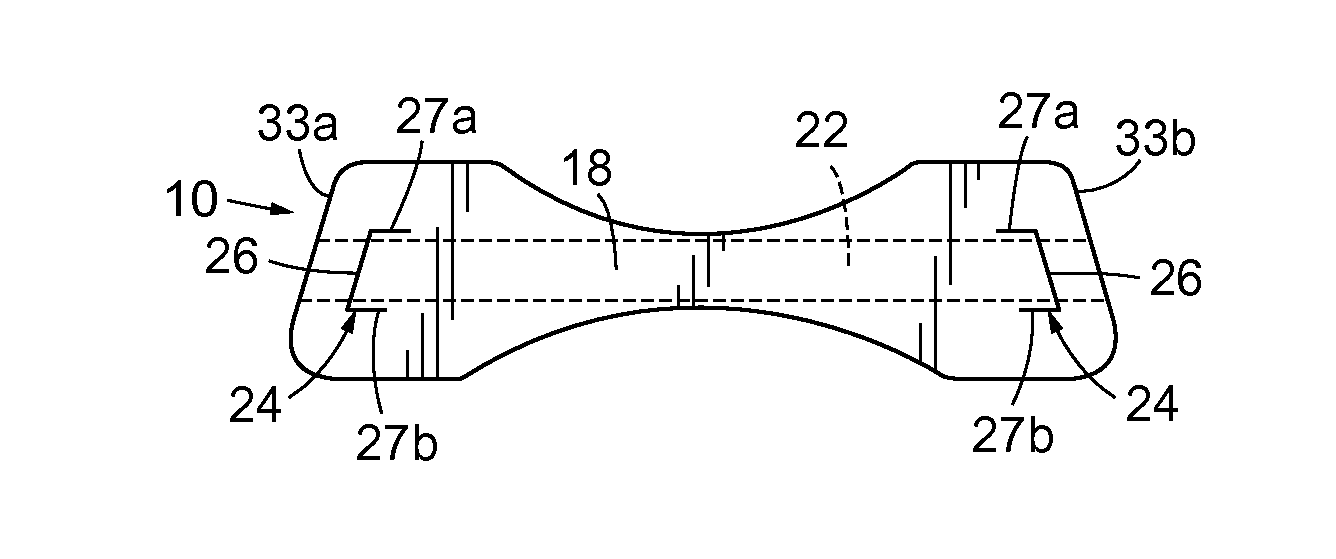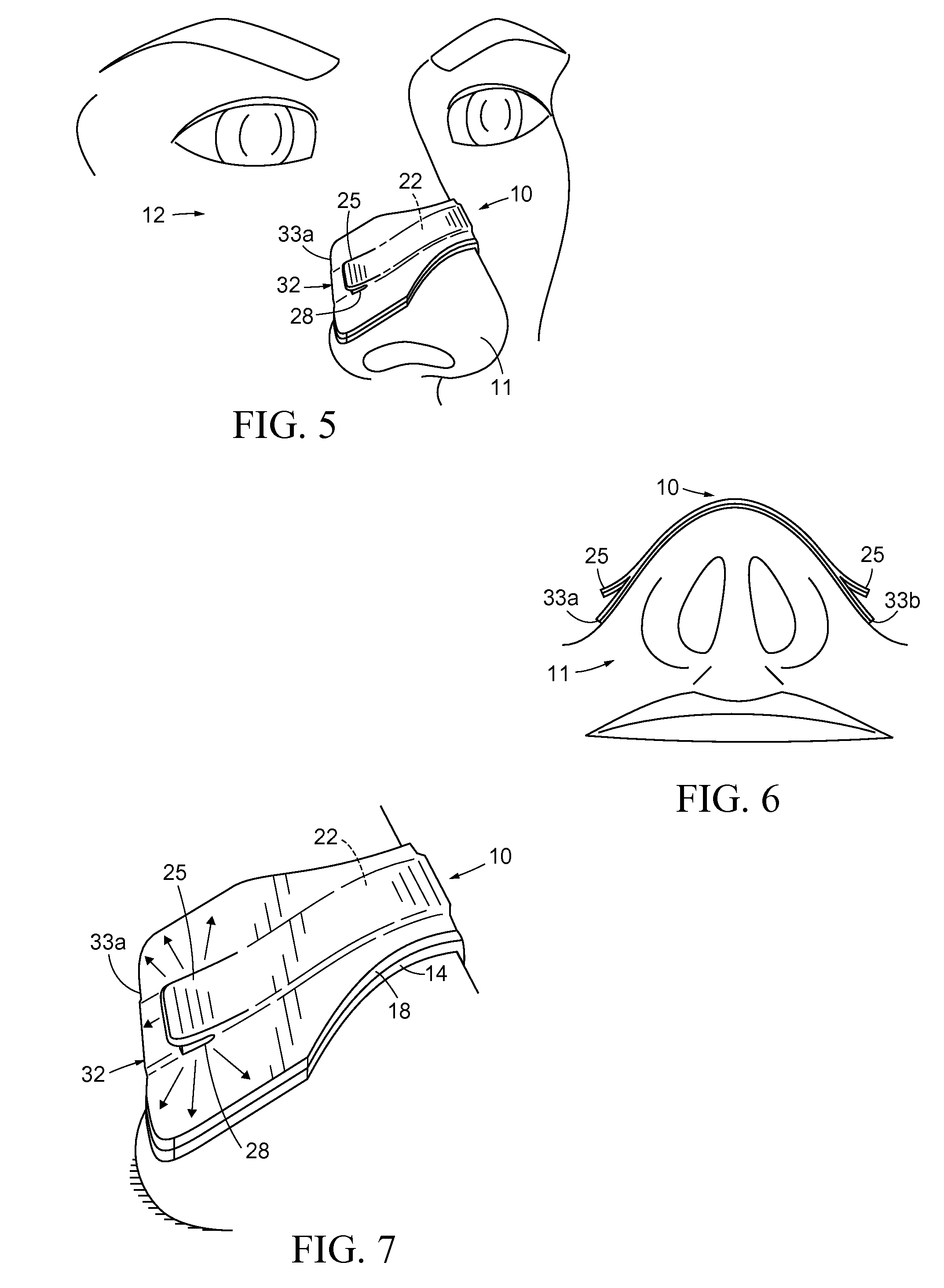Nasal dilator with means to direct resilient properties
a dilator and resilient technology, applied in medical science, non-surgical orthopedic devices, breathing protection, etc., can solve the problems of affecting breathing, sleep disturbance, irregularities and general discomfort, and typically has limited properties, so as to prevent one or more material separations, extend or increase the tissue engaging surface area
- Summary
- Abstract
- Description
- Claims
- Application Information
AI Technical Summary
Benefits of technology
Problems solved by technology
Method used
Image
Examples
Embodiment Construction
[0061]An embodiment of a nasal dilator, 10, in accordance with the present invention is illustrated in FIG. 1. Dilator 10 comprises a vertical laminate of material layers including: a base layer composed of at least one base member, 14, including components thereof; a resilient layer comprised of at least one resilient member, 22, including components thereof; and a cover layer composed of at least one cover member, 18, including components thereof. A protective layer of release paper liner, 15, removably covers any exposed adhesive from any layer preliminary to use of dilator 10 on the nose of a wearer. The periphery of release liner 15 may correspond to the periphery of dilator 10 or a periphery exceeding one or more dilators 10. The components or layers of dilator 10 are preferably aligned along their longitudinal centerlines.
[0062]The preferred material for the base and cover layers is from a group of widely available flexible nonwoven synthetic fabrics that allow the skin on us...
PUM
 Login to View More
Login to View More Abstract
Description
Claims
Application Information
 Login to View More
Login to View More - R&D
- Intellectual Property
- Life Sciences
- Materials
- Tech Scout
- Unparalleled Data Quality
- Higher Quality Content
- 60% Fewer Hallucinations
Browse by: Latest US Patents, China's latest patents, Technical Efficacy Thesaurus, Application Domain, Technology Topic, Popular Technical Reports.
© 2025 PatSnap. All rights reserved.Legal|Privacy policy|Modern Slavery Act Transparency Statement|Sitemap|About US| Contact US: help@patsnap.com



